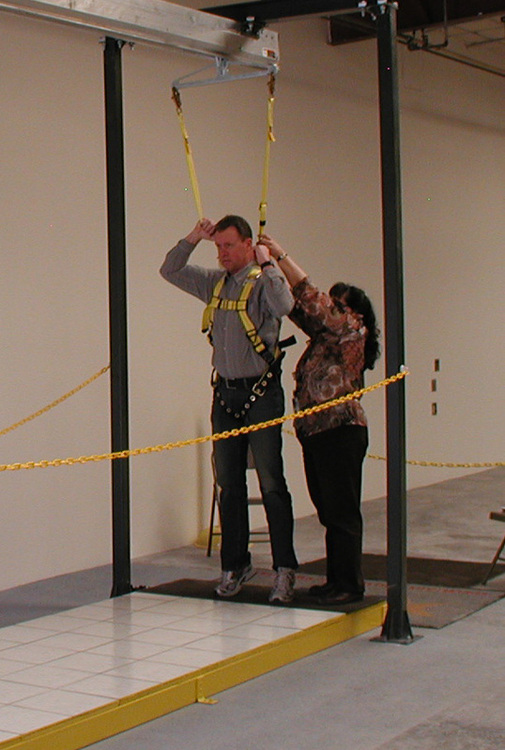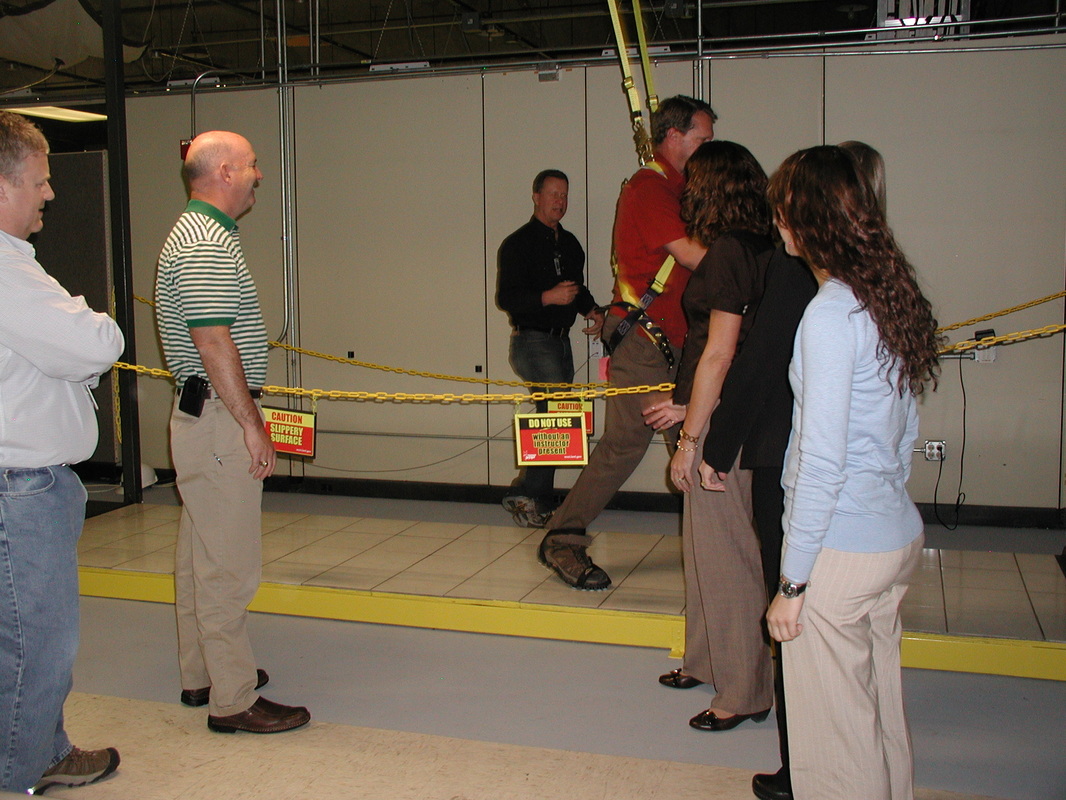Slip, Trip, & Fall Protection
Worker falls rank consistently in the top five injury statistics. Falls from the same level rank as the second leading cause of disabling injury.
Company safety officers are expected to reduce falls and their accompanying consequences: injuries, lack of productivity, and rising insurance premiums. But you have probably already discovered that warning people to be more careful (through media campaigns, training, and enforcement) has little effect on injury rates.
But there is a strategy that can help you address this problem. In 2005, Thurman Lockhart (Director of the Locomotion Research Laboratory at Virginia Tech University) developed “Kinetic Learning in Occupational Fall Safety Training”. The primary tool used is a Slip Simulator, which made its debut at the UPS Integrated Training Center in Maryland, and has since been recognized as an effective training aid in many industries.
Company safety officers are expected to reduce falls and their accompanying consequences: injuries, lack of productivity, and rising insurance premiums. But you have probably already discovered that warning people to be more careful (through media campaigns, training, and enforcement) has little effect on injury rates.
But there is a strategy that can help you address this problem. In 2005, Thurman Lockhart (Director of the Locomotion Research Laboratory at Virginia Tech University) developed “Kinetic Learning in Occupational Fall Safety Training”. The primary tool used is a Slip Simulator, which made its debut at the UPS Integrated Training Center in Maryland, and has since been recognized as an effective training aid in many industries.

By design, the simulator incorporates surface conditions that have a lower friction coefficient than ice. The curriculum includes fall causes, environmental assessment, shoe selection and gait.
Trainees are then given the opportunity to slip, trip, and fall with little or no consequence because there are defenses in place to protect them. They are first trained in the conceptual ideas, and then move on to practical applications.
As adult learning goes, this technique is extremely effective.
Adults learn best when they get to apply what they've learned soon after the training. For example, in fire extinguisher training, all the PASS method concepts take on new meaning when they are actually applied. It's better to practice the techniques in a controlled environment than to try to recall them for the first time during an actual fire.
The Slip Simulator incorporates this “learn by doing” method. It's like learning to ride a bicycle. Once you learn it, it's imprinted in your mind. Even if you haven't ridden in years, you could probably get on a bike today and ride it pretty well.
During the hands-on phase, class participants are asked to observe and encourage one another. They can see the errors their coworkers are making, apply that to their experience, and more importantly, see when the technique has been performed correctly. Next, the simulator trainee navigates a series of challenges. The challenges prepare the trainee to recall and apply the learned technique when they are confronted with changing conditions and distractions in real world.
Trainees are then given the opportunity to slip, trip, and fall with little or no consequence because there are defenses in place to protect them. They are first trained in the conceptual ideas, and then move on to practical applications.
As adult learning goes, this technique is extremely effective.
Adults learn best when they get to apply what they've learned soon after the training. For example, in fire extinguisher training, all the PASS method concepts take on new meaning when they are actually applied. It's better to practice the techniques in a controlled environment than to try to recall them for the first time during an actual fire.
The Slip Simulator incorporates this “learn by doing” method. It's like learning to ride a bicycle. Once you learn it, it's imprinted in your mind. Even if you haven't ridden in years, you could probably get on a bike today and ride it pretty well.
During the hands-on phase, class participants are asked to observe and encourage one another. They can see the errors their coworkers are making, apply that to their experience, and more importantly, see when the technique has been performed correctly. Next, the simulator trainee navigates a series of challenges. The challenges prepare the trainee to recall and apply the learned technique when they are confronted with changing conditions and distractions in real world.
|
Back in 2011, after having trained hundreds of people on the Slip Simulator, I had the opportunity to use what I’d been teaching. As I walked from my car to the office, an unseen patch of black ice in the parking lot caught me off guard but the “bicycle” effect kicked in, and the technique I had been training worked very well -- preventing me from falling.
The OSHA definition of a lost time injury is, “a workday (other that the day of the injury) where the worker is unable to return to their job.” Depending on input variables the formula for the average lost work time injury direct and indirect costs can vary from $20,000.00 to $30.000.00 The average cost of equipment, installation, and training for a Slip Simulator is approximately $32,000.00. By reducing (or preventing) just two fall injuries per year, this system can pay for itself within the first 9 months of operation. I have two free case studies available: "Kinetic Learning in Occupational Fall Safety Training” “The Statistical Impact of Slip Simulator Training at Los Alamos National Laboratory” They can be downloaded by filling out the request form on the right. |
|

